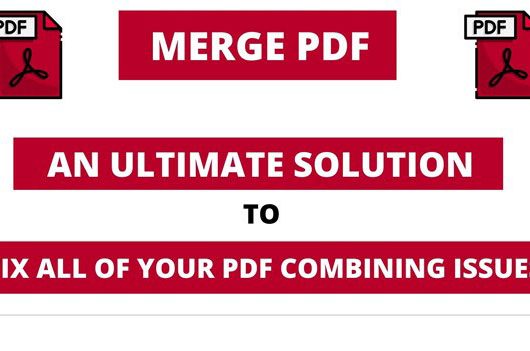Lean Six Sigma is an extremely powerful technique that helps businesses continuously improve their processes. By combining the concepts of Six Sigma and Lean Manufacturing, businesses can learn how to increase productivity with Lean Six Sigma Training. An important part of the process is using various Lean Six Sigma tools and techniques to test the process, find problems, and implement solutions. This makes it an important tool for continuous improvement. This blog explores some of the key Lean Six Sigma tools required for successful process improvement. and how to use it to achieve concrete results.
Table of Contents
- Value Stream Mapping [VSM]
- DMAIC Methodology
- Fishbone Diagram
- 5 Whys Technique
- Control Charts
- 5S Methodology
- Conclusion
Value Stream Mapping [VSM]
One of the core techniques in Lean Six Sigma is VSM which maps and understands the information and material flow needed to provide a good or service to a client. With the aid of VSM organisations can find inefficiencies, waste, and bottlenecks in their operations.
Each process step and the time and resources required to complete it are displayed visually in a value stream map. Teams can identify areas of delays, extra inventory, or needless tasks by making a current state map. This map is a starting point for creating a future state map, showing the intended workflow following enhancements. Teams can highlight areas for improvement and develop workable plans to attain a more efficient process by comparing the two maps.
DMAIC Methodology
Define, Measure, Analyse, Improve, and Control or [DMAIC] is the fundamental approach employed in Six Sigma programmes. Each phase of DMAIC serves a specific purpose in the problem solving process:
- Define: Describe the issue, the project’s objectives, and the client’s needs.
- Measure: Gather information to set benchmarks, assess present performance, and put a number on the issue.
- Analyse: To find the source of the issue and pinpoint areas that need improvement, employ data analysis.
- Improve: Create and put into action plans to deal with the underlying issues and make the procedure better.
- Control: Establish measures to monitor the procedure and maintain gains over time.
DMAIC is a fundamental tool for Lean Six Sigma practitioners since it offers an organised method for resolving issues and enhancing procedures.
Fishbone Diagram
A tool for determining a problem’s underlying causes is the Fishbone Diagram, sometimes called the Ishikawa or Cause and Effect Diagram. The problem is represented by the head of the diagram which is similar to the skeleton of a fish while the bones show possible reasons.
Teams brainstorm possible problem reasons and group them into important areas, such as People, Process, Equipment, Materials, Environment, and Management, to build a Fishbone Diagram. This makes it easier for teams to methodically investigate every potential reason and concentrate on the most likely causes of the issue. The Fishbone Diagram is particularly helpful during the DMAIC Analyse phase when figuring out a problem’s underlying causes, essential to developing workable solutions.
5 Whys Technique
5 Why is a very effective method of questioning which helps to find the real root of the problem by using the word why five times. This method is made from the fact that after each five “Why” directed to the cause, the person would have gone deeper than symptoms of the core of the problem.
For example, the first “Why?” could indicate a machine malfunctioning if a production line frequently suffers downtime. The answer to the second “Why?” can indicate that the machine isn’t receiving enough maintenance. The answer to the third “Why?” can suggest that maintenance schedules are not being adhered to, and so on. By the sixth “Why?” the team may have identified the core reason: inadequate training for maintenance personnel.
When tackling simple to moderately complicated problems with obfuscating root causes, the 5 Whys technique works especially well.
Control Charts
Control charts are statistical tools that track a process stability over time and spot any fluctuations that might point to issues. They are essential in the DMAIC control phase to guarantee that improvements are sustained and that the process stays within allowable bounds.
A control chart shows data points over time, together with a centre line [mean], an upper control limit [UCL], and a lower control limit [LCL]. Data points that deviate from the control range or exhibit non-random patterns can hint at an issue that needs more research.
Control charts are frequently used to monitor quality, lower variability, and ensure consistent performance in the manufacturing, healthcare, and service sectors.
5S Methodology
One Lean technique for creating and keeping a neat, efficient, and structured workplace is the 5S methodology. Sort, Set in Order, Shine, Standardise, and Sustain are the acronyms for the five S’s:
- Sort: Get rid of anything extra from the office.
- Set in Order: Clearly label and arrange the things you need for quick access.
- Shine: To keep standards up to date, routinely clean and inspect the workplace.
- Standardise: Create standardised protocols to ensure the upkeep of the first three Ss.
- Sustain: Uphold and consistently reinforce the 5S procedures.
By implementing 5S, a safer and more effective workplace can be created while encouraging productivity and cutting waste.
Conclusion
Lean Six Sigma provides a powerful toolkit for process improvement across industries. Tools like Value Stream Mapping, DMAIC, Fishbone Diagrams, Control Charts, and FMEA each uniquely identify issues, analyse processes, and implement solutions. With the proper guidance from The Knowledge Academy, mastering these essential Lean Six Sigma tools helps organisations drive continuous improvement, reduce waste, and deliver higher-quality products and services. Adopting Lean Six Sigma you can easily get Certified in Lean Six Sigma principles and it is beneficial and essential for business success in today’s competitive environment.











